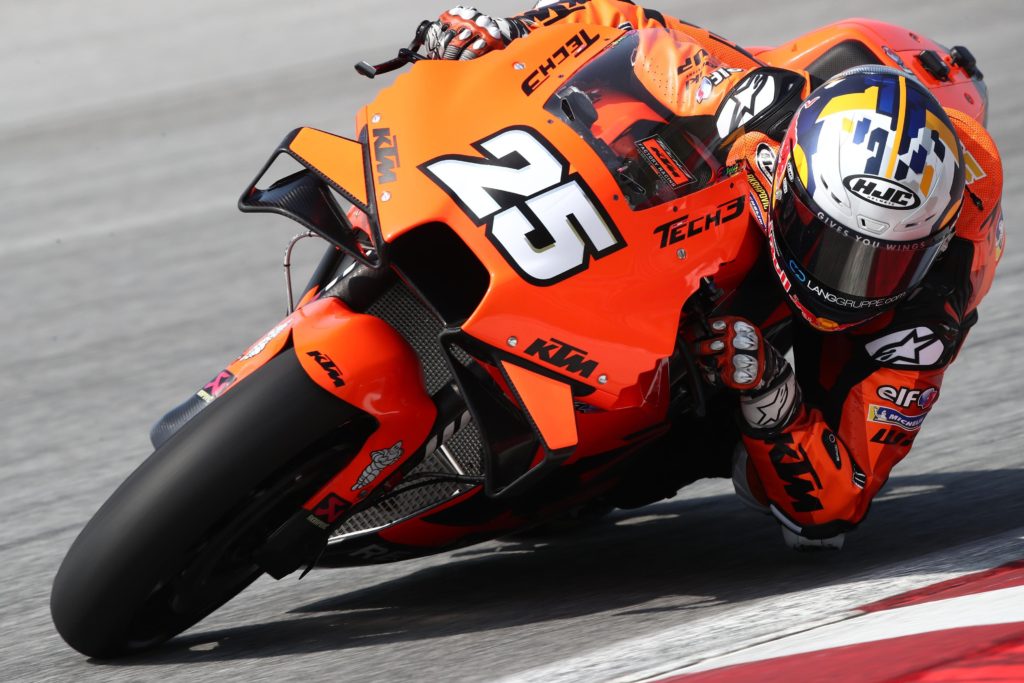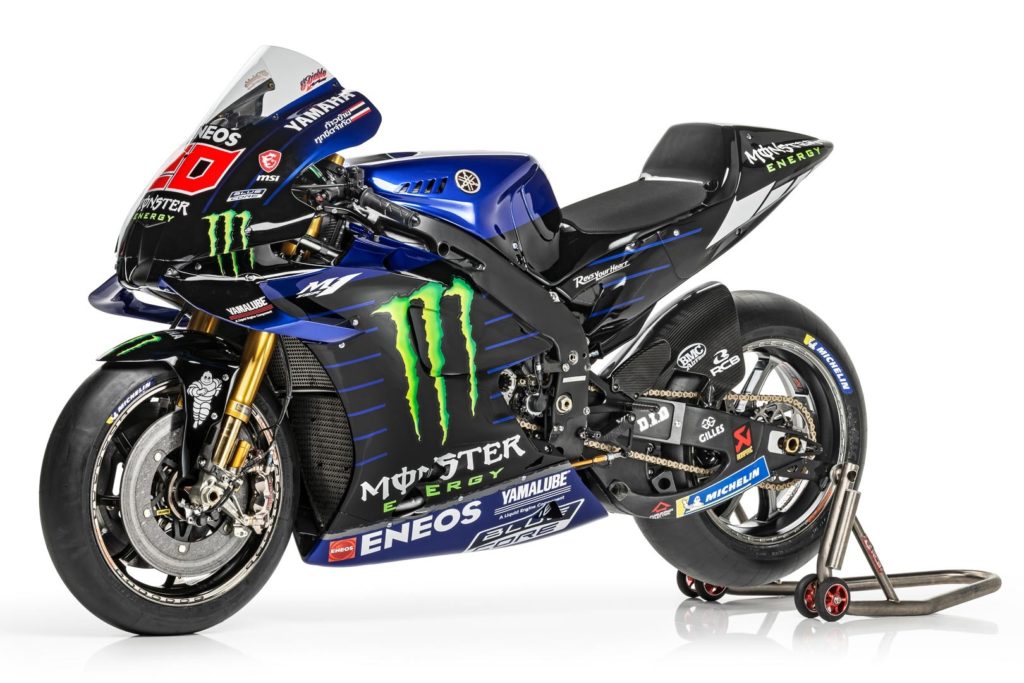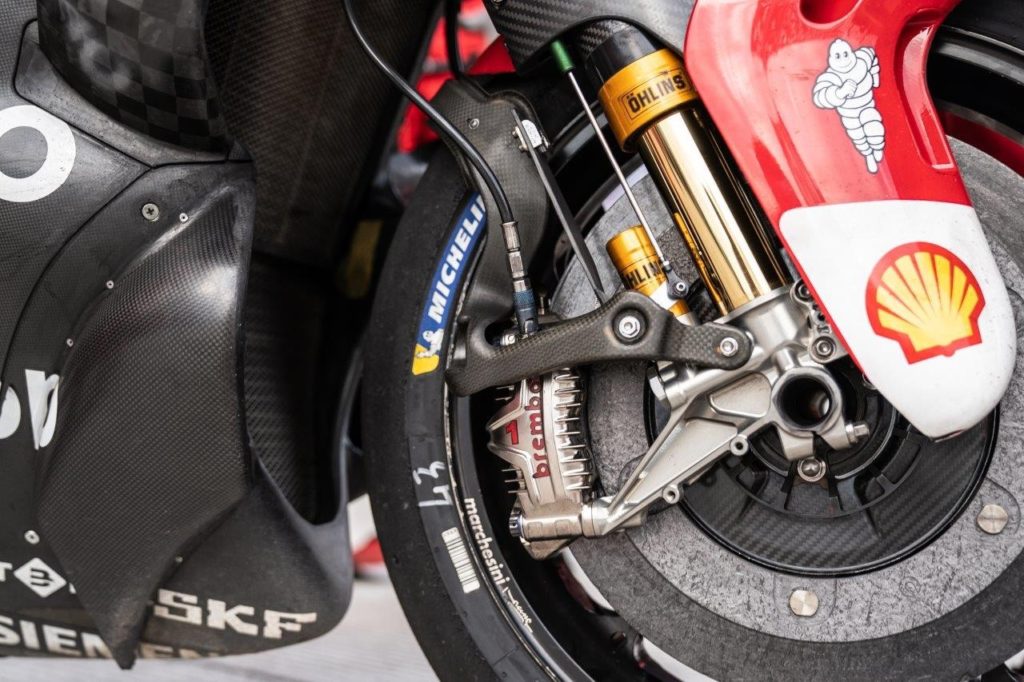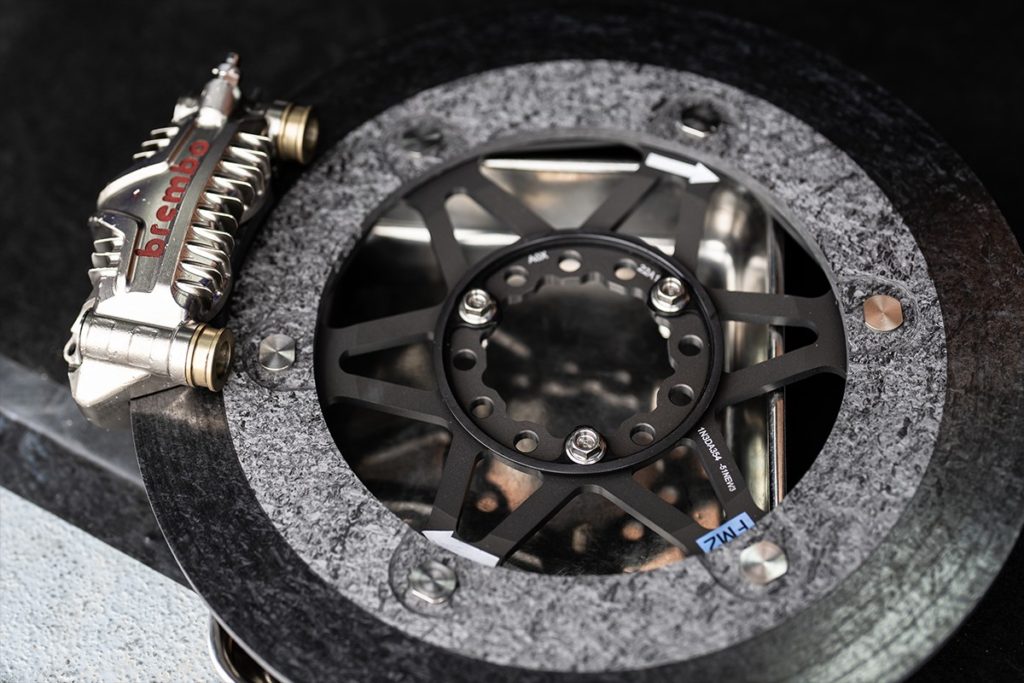
Today we take a look at the brakes used in MotoGP, the highest class of motorcycle racing. It is the third part of our racing series, after articles about brakes in Formula 1 and brakes in Indycar. The 2022 MotoGP Word Championship is a massive cup with 21 Grand Prix races and 13 teams with two drivers each. The teams source their racing bikes from various manufacturers, including Aprilia, Ducati, Honda, KTM, Suzuki, and Yamaha.

A 2020 MotooGP motorcycle is a high tech speed machine. Power comes from a liquid-cooled 1 liter four-cylinder engine, fed by unleaded 95-102 octane gasoline. Output varies per manufacturer but hovers around 250 hp and 120 Nm. All teams use a seamless-shift transmission. With a length of only 2 meters and a regulated minimum weight of 346 pounds, a MotoGP bike is seriously fast, with a top speed of some 360 kilometers per hour and an 0-100 acceleration in 2.6 seconds and 0-300 in 11.8 seconds.

With so much speed, the performance brakes got to be good. For over a decade, Brembo has been the exclusive supplier of brake systems for MotoGP racing. At the front, a MotoGP bike uses two carbon front discs with monobloc aluminium four-piston calipers. In wet and dry conditions, external covers and cooling ducts are sometimes applied to and over the brake discs to regulate the temperature of the brakes. At the back, it has a single stainless steel rear disc with a two-piston caliper.
Brembo offers 12 carbon brake disc options, depending on track and temperature. The base size of brake disc is 320mm, solid. For demanding tracks with lots of low-speed corners drivers can opt for 340mm (solid or vented) or 350mm (solid) carbon fiber front discs. For tracks with a high temperature or high altitude Brembo has developed a 355mm diameter ventilated carbon disc, where the increased heat exchange keeps the disc cool at all times. The discs are further divided into Light, Standard, and High mass. This concerns the brake disc surface. For example, the 320 millimeter disc is available as standard and as high mass, with a 47% larger brake disc surface.

The radially-mounted monobloc caliper is machined from a solid piece of aluminium, featuring four pistons. The external fins on top and bottom have two functions: they dissipate heat and they are part of an anti-drag system, developed to keep the brake pads away from the rotor to reduce unwanted drag. With this advanced braking technology, MotoGP drivers are able to slow down from a straight-line top speed of 360 km/h to an average corner-entry speed of 90 km/h in about 5.5 seconds, enduring a deceleration force of maximum 1.8G.
Next in the racing-brake series: Formula E, where the rear brakes have been… deleted altogether.